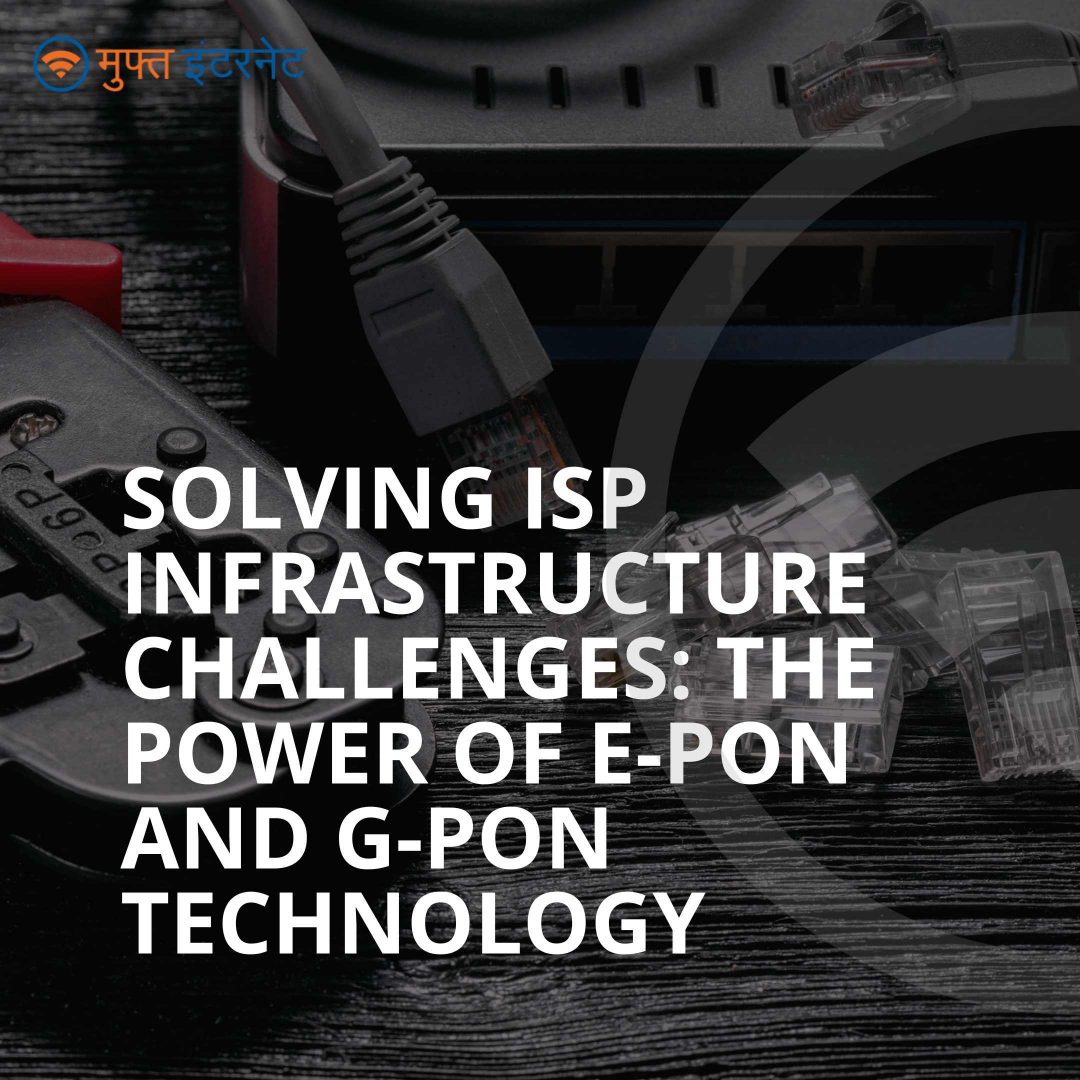
by Durgesh Ojha | Jul 24, 2023 | How to Become an ISP |
Introduction
Internet Service Providers (ISPs) face numerous infrastructure challenges when it comes to delivering high-quality and reliable internet services. These challenges include limited bandwidth, scalability issues, costly deployments, and outdated infrastructure. However, the emergence of Ethernet Passive Optical Network (E-PON) and Gigabit Passive Optical Network (G-PON) technologies has brought significant solutions to these problems. In this blog, we will explore how E-PON and G-PON address ISP infrastructure challenges, revolutionizing the way internet services are provided.
Bandwidth Expansion and Capacity Enhancement:
One of the primary challenges ISPs encounter is the limitation of available bandwidth to meet the increasing demands of their customers. E-PON and G-PON technologies solve this problem by leveraging fiber-optic cables, which offer substantially higher bandwidth capacity compared to traditional copper-based connections. This enables ISPs to expand their bandwidth capabilities and accommodate bandwidth-intensive applications such as high-definition video streaming, cloud services, and real-time collaboration tools. By upgrading to E-PON or G-PON, ISPs can effectively overcome bandwidth limitations and deliver superior internet experiences to their customers.
Scalability and Flexible Network Expansion:
Traditional infrastructure often struggles with scalability, making it difficult for ISPs to expand their networks and add new subscribers without significant investments in additional infrastructure. E-PON and G-PON provide a solution to this challenge through their point-to-multipoint architecture. With these technologies, ISPs can easily scale their networks by connecting multiple customers to a single fiber-optic line, eliminating the need for extensive cabling and infrastructure upgrades. This scalability allows ISPs to rapidly expand their customer base, meet growing demands, and adapt to market changes more efficiently.
Cost-Effectiveness and Operational Efficiency:
Upgrading infrastructure can be a costly endeavor for ISPs. However, E-PON and G-PON technologies offer cost-effective solutions that improve operational efficiency. Fiber-optic cables used in E-PON and G-PON are capable of transmitting data over longer distances without signal degradation, reducing the need for additional infrastructure components such as signal boosters or repeaters. Moreover, the passive nature of these networks eliminates the requirement for active components between the central office and the end-users, resulting in reduced power consumption and maintenance costs. By leveraging E-PON and G-PON, ISPs can achieve significant cost savings and enhance their operational efficiency.
Future-Proofing the Network:
With the rapid advancements in technology, ISPs need to future-proof their infrastructure to stay ahead of evolving customer demands. E-PON and G-PON networks provide the necessary foundation for a future-ready network. These technologies have the capacity to support emerging technologies such as 5G, Internet of Things (IoT), and smart cities. By embracing E-PON and G-PON, ISPs can ensure their infrastructure is capable of meeting the growing bandwidth requirements of these transformative technologies, positioning themselves as leaders in the industry.
Improved Reliability and Service Quality:
Outdated infrastructure often leads to reliability issues and poor service quality. E-PON and G-PON address these challenges by offering enhanced reliability and stability. Fiber-optic cables used in these networks are immune to electromagnetic interference and provide a more robust and secure connection. As a result, ISPs can deliver a consistently reliable internet service to their customers, minimizing downtime and service disruptions. The improved reliability and service quality provided by E-PON and G-PON contribute to higher customer satisfaction and retention.
Conclusion
E-PON and G-PON technologies have emerged as indispensable solutions to ISP infrastructure challenges. By enabling bandwidth expansion, scalability, cost-effectiveness, future-proofing, and improved reliability, E-PON and G-PON empower ISPs to overcome the limitations of traditional infrastructure. These technologies revolutionize the way internet services are delivered, ensuring faster, more reliable, and scalable connectivity for customers. As ISPs embrace E-PON and G-PON, they position themselves for success in the digital era, providing exceptional internet experiences while efficiently addressing infrastructure challenges.
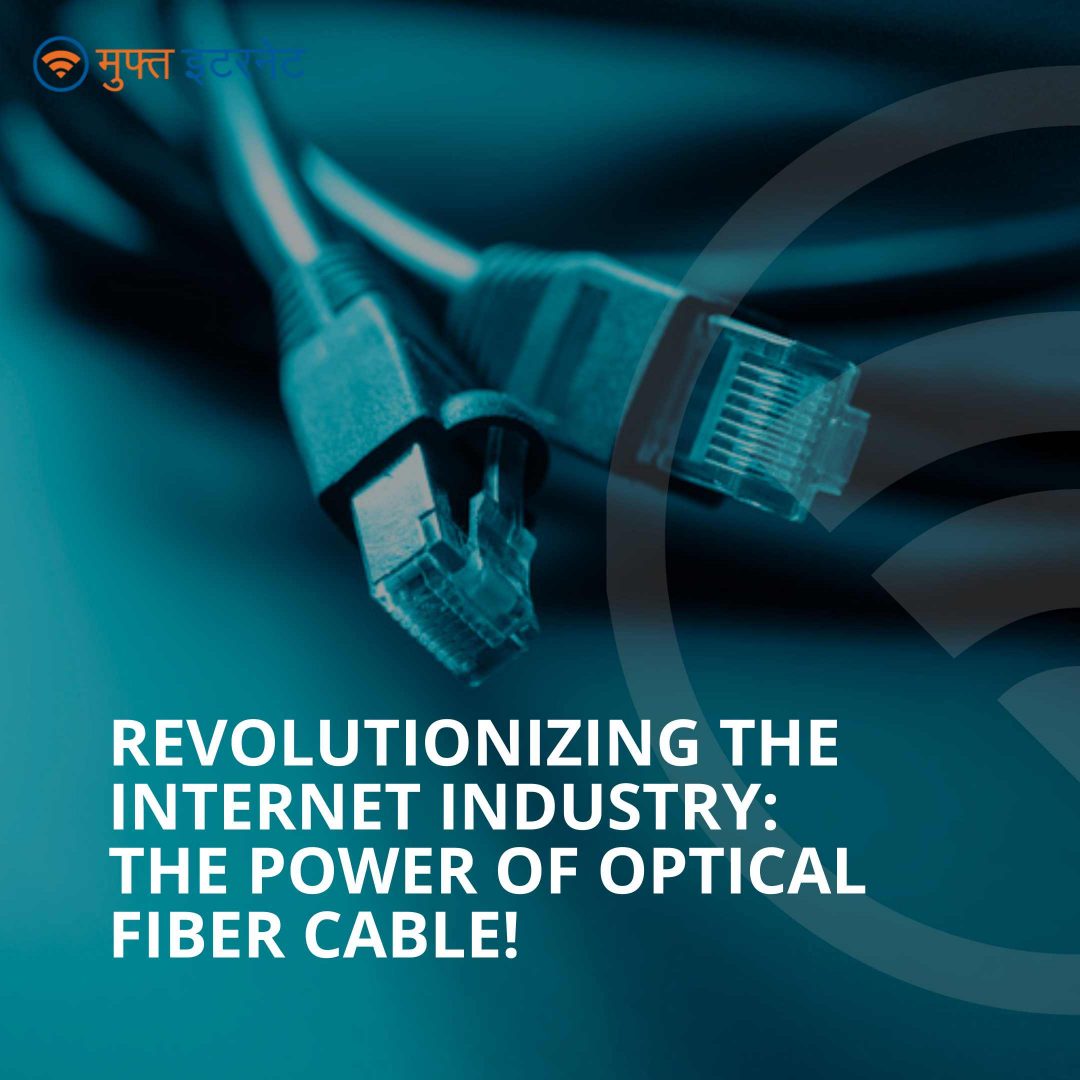
by Durgesh Ojha | Jul 17, 2023 | How to Become an ISP |
Introduction
In an era driven by technology and connectivity, the internet has become an indispensable part of our lives. From streaming high-definition videos to conducting seamless video conferences, the demand for faster and more reliable internet connections is ever-increasing. One technology that has played a crucial role in meeting this demand is optical fiber cable. In this blog post, we will explore the world of optical fiber cable and understand why it is indispensable to the internet industry.
What is Optical Fiber Cable?
Optical fiber cable is a high-capacity transmission medium used for transmitting information in the form of light signals. It consists of a thin strand of optically pure glass or plastic surrounded by a protective cladding layer. The cable is designed to transmit light signals over long distances with minimal loss and interference, providing a faster and more reliable means of data transmission compared to traditional copper cables.
Unprecedented Speed and Bandwidth
One of the primary reasons optical fiber cables is widely adopted in the internet industry is its incredible speed and bandwidth capabilities. Unlike copper cables, which transmit data using electrical signals, optical fiber cable transmits data using light signals. This fundamental difference allows for significantly higher data transmission rates. Fiber optic connections can provide speeds of up to several terabits per second, enabling lightning-fast downloads, smooth video streaming, and lag-free online gaming experiences.
Moreover, optical fiber cable offers an enormous bandwidth capacity, meaning it can carry a vast amount of data simultaneously. This makes it an ideal solution for handling the ever-increasing demands of bandwidth-hungry applications, such as cloud computing, virtual reality, and the Internet of Things (IoT). As technology continues to evolve, the need for greater bandwidth will only intensify, making optical fiber cable an essential component of the internet infrastructure.
Minimal Signal Loss and Interference
Another significant advantage of optical fiber cable is its superior resistance to signal loss and interference. Copper cables are susceptible to electromagnetic interference from nearby power lines, radio signals, and other electrical devices, leading to signal degradation and reduced transmission quality. In contrast, optical fiber cable is immune to electromagnetic interference due to its use of light signals.
Additionally, optical fiber cable experiences minimal signal loss over long distances. While copper cables suffer from attenuation, which limits the distance they can transmit data without degradation, optical fiber cable can transmit signals over several kilometers without any significant loss. This characteristic is crucial for long-distance data transmission, such as transoceanic communications and intercontinental connectivity.
Enhanced Reliability and Durability
The internet industry heavily relies on uninterrupted connectivity and 24/7 availability. Optical fiber cable offers exceptional reliability and durability, making it an ideal choice for critical applications. Unlike copper cables, which are prone to corrosion and environmental damage, fiber optic cables are not affected by moisture, temperature fluctuations, or even severe weather conditions. This resilience ensures that internet services remain operational even in challenging environments.
Furthermore, optical fiber cable is less susceptible to damage caused by physical stress or bending. With proper installation, fiber optic cables can withstand higher tensile forces, allowing for longer cable runs and increased flexibility in network design. This durability and flexibility make optical fiber cable suitable for various applications, including undersea cables, aerial installations, and underground networks.
Future-Proofing the Internet Infrastructure
As technology advances and data demands continue to skyrocket, optical fiber cable stands at the forefront of future-proofing the internet infrastructure. The deployment of fiber optic networks has become a priority for governments, telecommunications companies, and internet service providers worldwide. The transition from traditional copper-based networks to fiber optic networks ensures that the internet industry can support the evolving needs of consumers, businesses, and emerging technologies.
Conclusion
In the dynamic world of the internet, optical fiber cable has emerged as a game-changer, revolutionizing.

by Jinesh Parekh | Dec 9, 2022 | How to Become an ISP |
10 Steps To Start Your Own ISP Business In India
Do you want to start an ISP in India? Are you looking for a step-by-step guide on how to start your own ISP business in India? Well, you are at the right place!
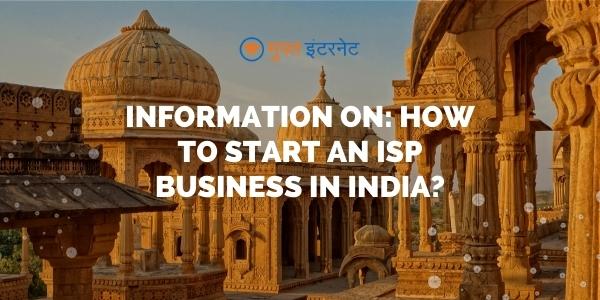
Introduction: Steps to Start Your Own ISP Business in India
There are a number of steps you need to take in order to start your own ISP business in India. Below we outline the key steps you need to take:
1. Register your business: In order to start an ISP business in India, you first need to register your company with the Registrar of Companies (ROC). This can be done online through the Ministry of Corporate Affairs website.
2. Obtain a license: Once your company is registered, you then need to obtain an Internet Service Provider License from the Department of Telecommunications (DoT). This process can take up to six months.
3. Set up infrastructure: You will need to set up the necessary infrastructure for your ISP franchise in India, which includes obtaining internet bandwidth, setting up servers and routers, and establishing connectivity with other ISPs.
4. Launch your service: Once everything is set up, you can launch your ISP service! Make sure to promote your business and attract customers.
1. Find Funding
If you are planning to start your own Internet Service Provider (ISP) business in India, one of the first things you need to do is find funding. Here are some tips on how to find funding for your ISP business:
1. Look for investors who are interested in the telecommunications industry. There are many venture capitalists and private equity firms that invest in the telecommunications sector. You can try approaching them for funding.
2. Another option is to take out a loan from a bank. Many banks offer loans specifically for businesses in the telecommunications industry.
3. You can also look for government grants or subsidies that are available for starting an ISP business in India. The Indian government provides various subsidies and incentives for businesses that promote broadband penetration in the country.
4. Finally, you can also consider self-funding your ISP business by investing your own personal savings or taking out a personal loan. This option may be riskier but it can also be more rewarding if your business is successful.
2. Find a Location
Assuming that you have made up your mind to start your own internet franchise in India, the first step would be to find a location for setting up your office. This is important because your office should be situated in an area where there is a good demand for internet connectivity. Once you have zeroed in on a suitable location, the next step would be to obtain all the necessary licenses and permits from the local authorities. Only after these formalities have been completed, can you go ahead with setting up your office and starting operations.
3. Register the Company
In order to start your own ISP business in India, you will need to register the company with the Registrar of Companies (ROC). This can be done online or offline. The process is relatively simple and straightforward, and once the company is registered, you will be able to obtain a Certificate of Incorporation.
Once the company is registered, you will need to obtain a license from the Telecom Regulatory Authority of India (TRAI). This license will allow you to provide broadband services in India. The process for obtaining this license is also relatively simple and straightforward.
Once you have registered the company and obtained the necessary licenses, you will need to set up infrastructure for your business. This includes setting up servers, routers, and other networking equipment. You will also need to sign up with an Internet Service Provider (ISP) in order to get connectivity for your business.
After all of this is complete, you will be ready to start providing broadband services to customers in India!
4. Get Licenses and Permits
In order to start your own ISP business in India, you will need to obtain several licenses and permits from the Indian government. Here is a rundown of the licenses and permits you will need:
1. Telecom Service Provider License: This license is required for any company that wants to provide telecom services in India. The application process for this license can be found on the website of the Telecom Regulatory Authority of India (TRAI).
2. Internet Service Provider License: This license is required for any company that wants to provide internet services in India. The application process for this license can be found on the website of the Department of Telecommunications (DoT).
3. Radio Frequency Identification Device License: This license is required for any company that wants to use radiofrequency identification devices (RFID) in India. The application process for this license can be found on the website of the Wireless Planning & Coordination Wing (WPC) of DoT.
4. Cable Operator Registration Certificate: This certificate is required for any company that wants to operate a cable television network in India. The application process for this certificate can be found on the website of the Ministry of Information and Broadcasting (MIB).
5. Design a Network Diagram
Designing a network diagram is an important step in starting your own ISP business in India. There are many software programs that can help you create a network diagram, but it is important to understand the basics of networking before you start. The following steps will help you design a simple network diagram for your ISP business:
1. Decide on the purpose of your network diagram. Are you trying to map out the physical layout of your network? Or are you trying to show the logical flow of data between devices?
2. Choose a software program that suits your needs. If you’re not sure which program to use, consult with a professional for advice.
3. Gather information about your network. You’ll need to know things like the number of devices on your network, their IP addresses, and what kinds of connections they use (Ethernet, Wi-Fi, etc.).
4. Begin designing your diagram. Start by adding the devices on your network and then connecting them together using lines or arrows. Be sure to label each device and connection so that others can understand your diagram.
5. Save or print your diagram for future reference. As your network grows, you may need to update your diagram to reflect changes in the physical or logical layout of your network.
6. Install Network Equipment
Assuming you already have the equipment and just need to install it, here are the steps:
1. Find a good location: The first step is to find a good location for your tower or server room. This should be a spot with good coverage and no obstructions.
2. Prepare the equipment: Once you have found a good location, you need to set up the equipment. This includes setting up towers, antennas, and routers.
3. Connect the equipment: Once everything is set up, you need to connect all of the equipment. This includes connecting the router to the modem and connecting all of the cables.
4. Test the connection: Once everything is connected, you need to test the connection to make sure everything is working properly.
7. Install the Hardware for the Wiring System
In order to install the hardware for the wiring system, you will need to obtain the following items:
-Ethernet Cable
-Modem
-Router
-ISP Gateway Device
-Wireless Access Point
-Ethernet Switch
-Network Cabling
Once you have gathered all of the necessary hardware, you will need to connect the modem to the gateway device. Then, connect the gateway device to the router. Next, connect the Ethernet switch to the router. Finally, connect the wireless access point to the Ethernet switch. Once all of these connections have been made, you will be able to start using your new ISP business in India!
8. Install Data Cables and Connectivity Devices
Installing data cables and connectivity devices is a crucial step in starting your own ISP business in India. There are a few things to keep in mind when installing data cables and devices:
1. Make sure you follow all local building codes and regulations. This includes obtaining any necessary permits.
2. Plan the installation of your data cables and devices carefully. This will save you time and money in the long run.
3. Use high-quality data cables and devices. This will ensure optimal performance of your network.
4. Hire a professional installer if you are not confident in your abilities to do it yourself. This will ensure the job is done right the first time.
9. Connect to the Internet Service Provider
In order to start your own ISP business in India, you will need to connect to an Internet Service Provider (ISP). There are a few different ways to do this, but the most common is to use a broadband connection. This type of connection will allow you to connect to the Internet at high speeds, making it ideal for streaming video and downloading files.
Once you have connected to an ISP, you will need to select a ISP business plan in India that suits your needs. There are many different types of plans available, so make sure to do your research before selecting one. Once you have selected a plan, you will be able to start using the Internet immediately.
If you have doubts and need help in starting your own ISP franchise or business – talk to us. Our network of ISP consultants can help you start your own ISP business, apply for an ISP license or buy bandwidth for resale – Muft Internet’s network of ISP consultants can help you.
ALSO, YOU CAN READ OUR NEW UPDATES

by Jinesh Parekh | Jun 17, 2020 | How to Become an ISP |
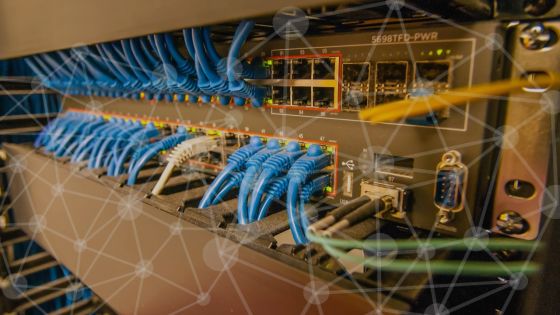
It’s possibly the best time to become an ISP in India within the non-metro regions!
India now has 600 million Internet users. With 1.3 billion as it’s population, 60% of India is still offline!
India still has a tremendous scope for growth in the rural telecom industry.
For the first time, rural India has more number of Internet users than the cities. At Muft Internet, we have been investing in rural telecom development to provide internet for rural areas in India since the last 5 years!
Unlike big telco players like Jio and Airtel, we never based our services in the cities. No point in competing if millions of villages are still offline. Instead, our investments have always been rural India.
The economic shutdown caused de-urbanisation. Millions were forced back to their villages. And now, those folks are going online and teaching people around them how to use the internet. Businesses around the world started moving online.
People consumed more video (via internet) than TV. This made our business grow – more and more people want to become an ISP in India.The global economic shutdown game changed the way our economy works.
Welcome to the biggest boom in rural telco. The fastest growing industry in India for the next decade.
After the economic shutdown, for the first time in India, there are more Internet users in rural areas than in big metro cities. Unfortunately, rural India still lacks sufficient infrastructure for broadband internet distribution.
With high costs of infrastructure set up, wireless technologies seem to pave the way for people to easily become an ISP in India and set up an ISP franchise in India. The growing demand is now being met with decentralised ISPs that use the power of last mile air fibre technologies.
The oil industry of the 21st century is ‘telecommunications and broadband’. Globally, demand for data is increasing every year. With the introduction of mobile video, more and more data is being consumed through the internet.
At Muft Internet, we have assisted over 1200 local operators in villages/towns across rural India with:
- Learn how to become an ISP
- Setting up your own wireless broadband ISP (or get an ISP Franchise) in their own neighbourhood/town/village
- Using existing infrastructure for cable operators to also give broadband internet.
- Providing reliable solutions to buy wholesale internet bandwidthin bulk for distribution.
- Consultancy/guidance to apply for ISP license from the Department of Telecom.
- Technical routing and networking support for small-medium ISPs.
ALSO, YOU CAN READ OUR NEW UPDATES
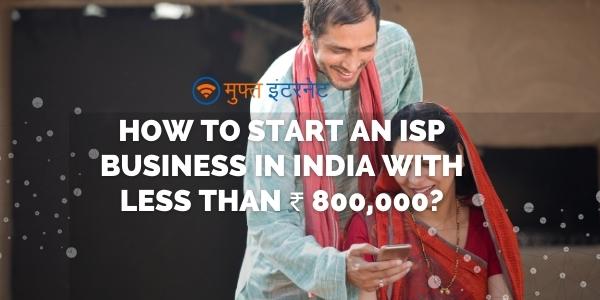
by Jinesh Parekh | Jan 2, 2017 | How to Become an ISP |

In this post we provide a sample business model to start an ISP / WISP business in India
This article may serve useful to those who want to become an Internet service provider in India and understand the minimum investment required for their own WISP set-up with the help of our ISP consultants. We provide this information based on clients we helped become a WISP in small cities, townships and villages in India.
Introduction: Is it possible to start a WISP business in India with less than ₹ 500,000?
With our ISP consultants’ expertise and experience, we can say Yes!
- To become an ISP few years back in India meant heavy licensing, bandwidth and infrastructure costs. Luckily, it’s much easier now. There are two possible ways to become an isp:
- After you apply for an ISP license or an ISP franchise you can buy bulk bandwidth from the bulk bandwidth providers in India, create your own marketing materials and pricing plans, work with recommended hardware/software and expand to nearby cities/villages in your district.
- Costs of starting an ISP franchise in India have significantly dropped over the last 3 years. Costs associated with applying for an ISP license or buying wireless hardware/software have significantly dropped over the last 3 years. This makes it an excellent time to invest and start a WISP business in India.
The Model: Start a WISP business in India with less than ₹ 500,000
The following model is built in a way to serve a small city, township towns or villages in India. We have low-cost WISP business models was built over time and in a way that, even with as low as 100 customers per year, the WISP business set up would self-sustainable and marginally profitable.
Lets start estimating your average revenue per year to start WISP business in India with minimal profitability:
| if you have |
|
& if each customer pays |
|
for |
|
your estimated revenue is |
| 100 |
x |
₹500 |
x |
12 |
= |
₹600,000 |
| customers |
|
per month |
|
months |
|
per year |
Estimated Revenue for 3 years: ₹ 18,00,000
Cost of bandwidth (a 155-200 mbps line is enough for the first 100-150 customers) is about 25,000/month.
Lets proceed by estimating your fixed one-time investment costs to start a WISP business in India:
1. ISP License associated costs (Optional)
| DoT costs |
₹42,000 |
for a C class license (Inclusive of 60,000/- of Bank Guarantees) |
payable to DoT |
| Consultancy fees |
₹50,000 |
for ISP application assistance |
payable to consultant |
| Total |
₹92,000 |
|
|
2. Infrastructure and set-up associated costs
| Base Station Server |
₹50,000 |
manages your bulk bandwidth |
payable to hardware supplier |
| Cabling, Towers & Access Points |
₹150,000 |
for end-delivery for up to 125 customers. |
payable to hardware & networking equipment supplier |
| Survey, Installation & Training |
₹70,000 approx. |
fees paid to engineers for site survey, installation & training. |
payable to your ISP networking consultant |
| Client end equipment |
3,000-4,500 per client |
Equipment needed on the client side |
payable to hardware supplier |
TOTAL: ~3-4,00,000/-
Lets proceed further by estimating your recurring costs to start a WISP business in India. These costs will occur monthly and can be removed from customer revenue.
| Buying Bulk Bandwidth |
₹225,000 per year |
Depends on volume and area. |
payable to ISP operator
(We will help you buy bulk bandwidth from a local supplier) |
| WiFi Management Software |
₹20,000 per year |
manages your users and lets your create Internet plans |
payable to software vendor |
| Electricity |
– |
*assume costs for 2 computers that need to be always on |
|
| Server Room / Office Space |
– |
*space required for 2 computer desktops |
|
| Staff |
– |
*1 entry level candidate trained by our ISP consultant for sales/support |
|
| Marketing |
– |
*brochures, business cards, banners, free wifi advertising |
|
| Total |
₹270,000 per year
|
|
|
Conclusion
Total Fixed + Recurring Expenses for 1st year: ₹ 600,000~
Total Fixed + Recurring Expenses over 3 years: ₹ 11,50,000~
Break Even Time: Recover investment in approx. months
Expected Revenue in 5 years: 35,00,000/-
Investment Stages to start a WISP business in India
| Phase A: |
30-120 days |
Applying for an ISP License or finding the right partner agreement for ISP franchise |
₹90,000 (class C including consulting fees) |
| Phase B: |
3 days |
Site Survey & Network Planning |
₹70,000 |
| Phase C: |
7 days |
Hardware/Software Purchase & Installation |
₹300,000 |
| Phase D: |
7-10 days |
Bandwidth Purchase |
₹25,000/month for 100-155 Mbps approx. |
| Start your WISP business in India within 3 months. |
Historic trends suggest that costs of hardware, software and bandwidth will reduce over time. In the next 4 years India will double its Internet population and quadruple its data demands.
We’ve planned this WISP business model in a way that – it would be easy for you to expand your customer capacity to 5000 without any server upgrades or major networking costs.
Contact us if you wish to start your own WISP business. (Click here)







